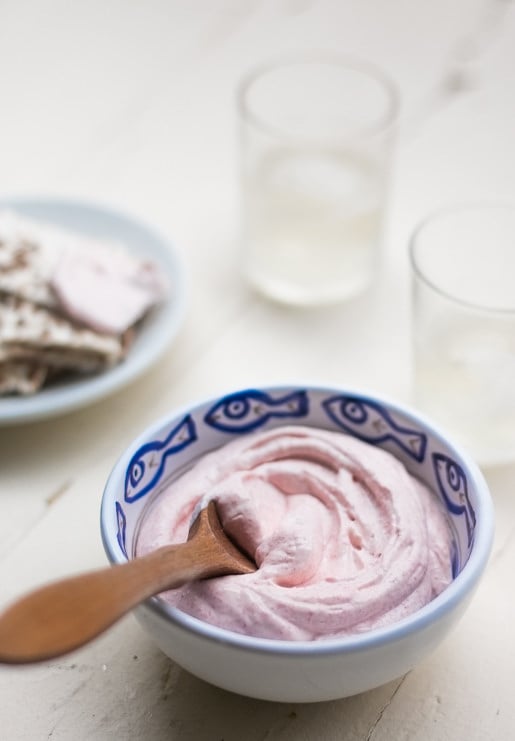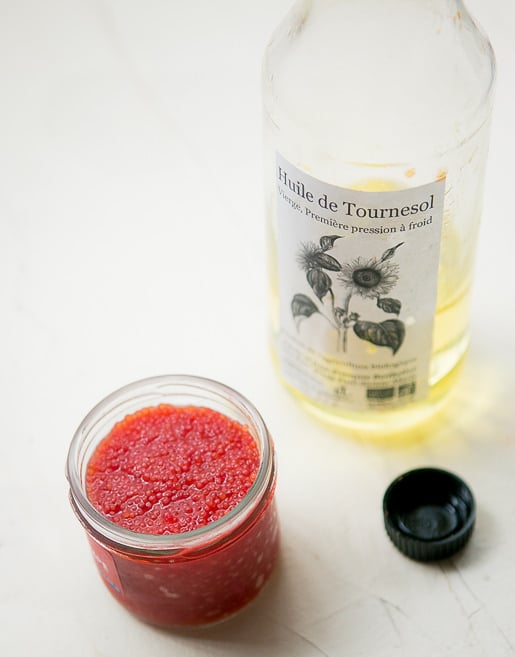Tarama

The first time I saw tarama, I hated it. It was a brilliant pink color, one not generally found in nature. And when I heard the paste was fish egg-based, I said, “Non, merci.” Since then, I’ve become a bit accro (hooked) on the Greek spread, and decided it was time to spread the word.
And I’m not the only one who’s become a convert. Tarama is a very popular appetizer in Paris, and doesn’t need much introduction here as it’s widely available – even in supermarkets, next to other spreads like hummus and tapenade. (So take that, people who think that the French don’t embrace foods from other cultures.)
However it’s hard to find very good versions. Most of the little plastic tubs sold in grocery stores are particularly brightly colored, and don’t do the dip justice, although you can find good versions of tarama in Greek and Middle Eastern épiceries, as well as some of the shops in the Marais. Some versions are light in color, almost beige, making me wonder where they get their fish eggs.
I made mine with œufs de lompe, otherwise known as lumpfish eggs. Farmed trout roe is milder, but can be used if it’s available — or another variety of salted fish eggs. Most grocery stores carry lumpfish caviar, but you can check your local fish market for what might be available in your area.
Tarama is an emulsion, made just like mayonnaise, but without any eggs. (And it’s not as finicky, either.) The thickening comes from bread (although some versions use potatoes), and a blender makes fast work of it. It’s good served as an appetizer with little toasts or crackers, and goes well with a light white wine.
Tarama
- 4 slices (90g) white bread, such as pain de mie
- 1/2 cup (100g) fish roe, red or white
- 1/2 cup (125ml) olive oil
- 1/2 cup (125ml) vegetable oil, such as canola or sunflower
- Optional: 1 small clove garlic, peeled, green germ removed, and minced
- 2 tablespoons fresh lemon juice
- 1/4 teaspoon ground white pepper
- Trim the crusts from the bread, break into large pieces and put into a bowl. Cover with water then immediately grab them with your hand and squeeze most of the water out.
- Put the bread, fish eggs, and garlic (if using) in a blender or the bowl of a food processor. Put on the lid. (If using a blender, remove the center cap, in the middle of the lid. A funnel put in the opening will prevent splattering. If using a food processor, remove the cylinder in the feeding tube.)
- Turn the blender on to thoroughly combine the fish eggs and bread. Mix the olive oil and vegetable oil in a measuring cup with a spout. With the motor running on medium-high speed, drizzle the oil into the fish egg mixture in a slow, steady stream, until it’s all added. Add the lemon juice and white pepper. Taste, and add more lemon juice, if desired.
- Scrape into a bowl and serve.
Notes
Related Links and Recipes
How to make caviar (Honest Food)





















